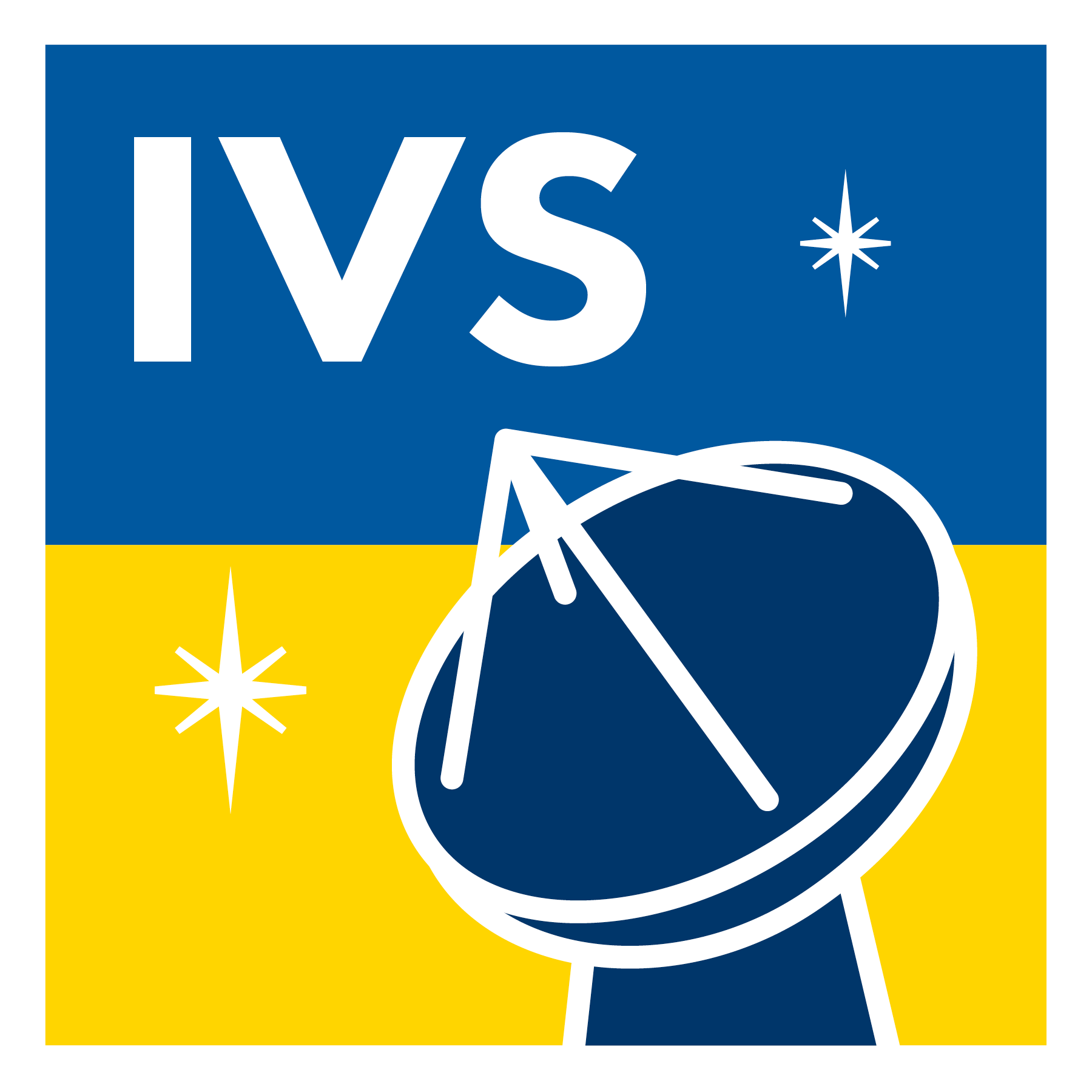VLBI is a technique that measures the time difference between the arrival at two Earth-based antennas of a radio wave emitted by a distant quasar. The noise-like signals are recorded at the IVS radio telescopes and sent to a central location to be analyzed.
VLBI is used in many areas of science, and it is not a simple topic to understand. On this page, we’ll explain just the basic concepts and answer some of the most frequently asked questions. Please send questions about VLBI to ivs@mit.edu, and we’ll add answers to this page over time.
Is VLBI a new development?
Developed in the mid to late 1960s with astronomy, VLBI was soon applied to geodesy as well. (See Geodesy and VLBI for more details.) Today it is used by many organizations and institutions for geodesy, astrometry, and astronomy.
V Very
L Long
B Baseline
I Interferometry
Very long baseline interferometry is a measurement technique that uses pairs of radio antennas (also known as radio telescopes) located at great distances from each other to measure the positions of remote astronomical objects, the locations of the telescopes on the surface of the Earth, the wobble of the Earth’s rotational axis, and universal time.
In geodesy, for example, the pairs of radio telescopes observe a signal from a distant celestial object, such as a quasar. Quasars are so distant that they appear to be at a fixed point on the sky.
The telescopes observe the same object together, with the exact time given by well-calibrated and coordinated atomic clocks called hydrogen masers.
The recorded signals are sent to a central correlator, where the signals are combined or superimposed. The signal arrives at one telescope slightly before the other. The delay in arrival at the second telescope is measured and used to calculate the exact distance between the two radio telescopes.
See our page Geodesy and VLBI for information on how VLBI is used in geodesy.
- baseline
- A baseline is the distance between two VLBI antennas. The pair of antennas are often very far apart—in some cases, thousands of kilometers. Longer baselines increase the sensitivity of the measurements.
- interferometry
- Interferometry is a technique that uses pairs of radio antennas. The radio antennas, or telescopes, observe the same distant source—such as a quasar—at the exact same time. Their signals are superimposed (correlated) in a mathematical process that makes use of interference.
- correlator
- At an IVS correlator, the signals from many radio telescopes around the globe are combined, or correlated, using interferometry. The result of using signals from a pair of telescopes gives more information than the signal from either single telescope.
- geodesy
- Geodesy (see also our page on Geodesy and VLBI for more details) is the science of measuring the Earth’s shape, rotation, and gravity, and their changes over time. The IVS contributes to measurements of the Earth’s shape and rotation.
- astrometry
- Astrometry is the science of precisely measuring the positions and movements of stars, quasars, and other celestial bodies.
- radio waves
- Radio waves are a type of electromagnetic (EM) radiation. Everything in the universe emits EM radiation, including celestial objects. Measuring the radio signal or radio waves from objects in space allows us to obtain an enormous amount of information about these objects.
VLBI is essential to obtaining the level of GPS accuracy that we enjoy today. GPS would continue to function without VLBI, but its accuracy would gradually diminish over time; VLBI is essential to keeping GPS coordinates accurate by synchronizing Universal Time.
UT1 is the principal form of Universal Time (UT), measured by VLBIIt is monitored by the International Earth Rotation and Reference Systems Service (IERS), of which the IVS is one component.
From the IERS: “VLBI is the only technique capable of measuring all components of the earth’s orientation accurately and simultaneously.”
VLBI ensures that UT1 is accurate and precise. It is the most accurate time standard possible. Our clocks reflect the slightly variable speed of the Earth’s rotation thanks to VLBI and the radio telescopes and components of the IVS.
For more information on how VLBI is used in geodesy, see Geodesy and VLBI.
Come back soon: this site will be expanding constantly with additional information and more details on the science and technology!
In the meantime, VLBI is a complicated topic! For more details and excellent explanations, see these sites:
- https://www.gfz-potsdam.de/en/section/space-geodetic-techniques/topics/geodetic-and-astrometric-vlbi/
- https://www.iers.org/IERS/EN/Science/Techniques/vlbi.html
- https://www.cv.nrao.edu/vlbabook/
On interferometry: https://www.explainthatstuff.com/howinterferometerswork.html
On the history of geodetic VLBI, from the NASA perspective: https://ivscc.gsfc.nasa.gov/about/vlbi/NASA-GSFC_Geodetic_VLBI_Program.pdf
